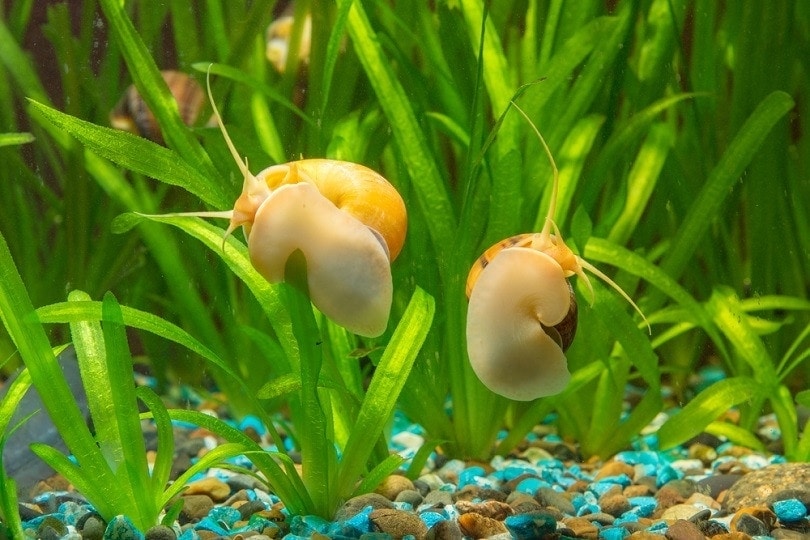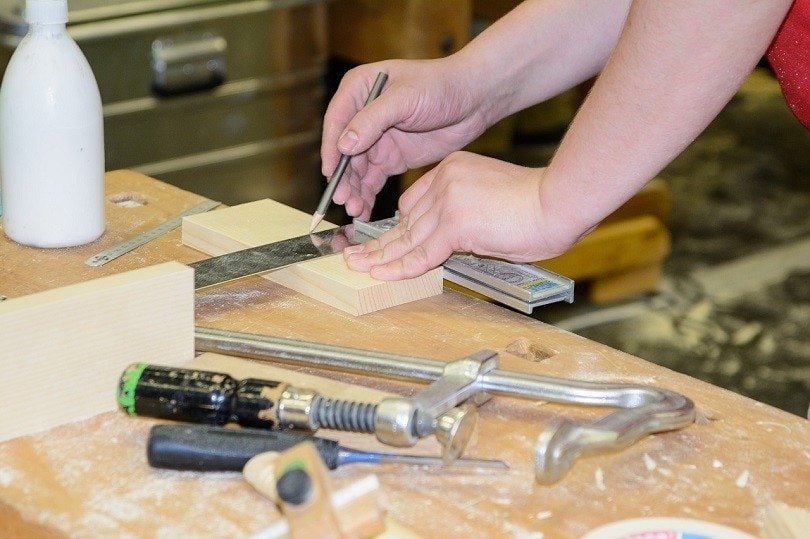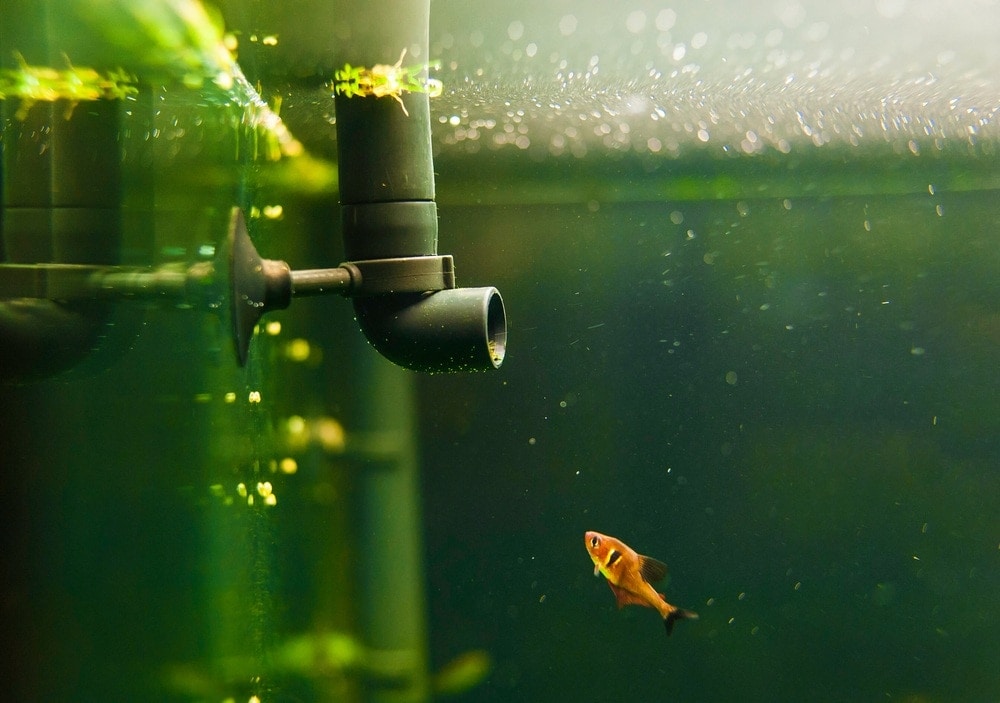How To Use Aquarium Sponge Filters: Vet-Approved Setup Guide, Pros & Cons

Updated on
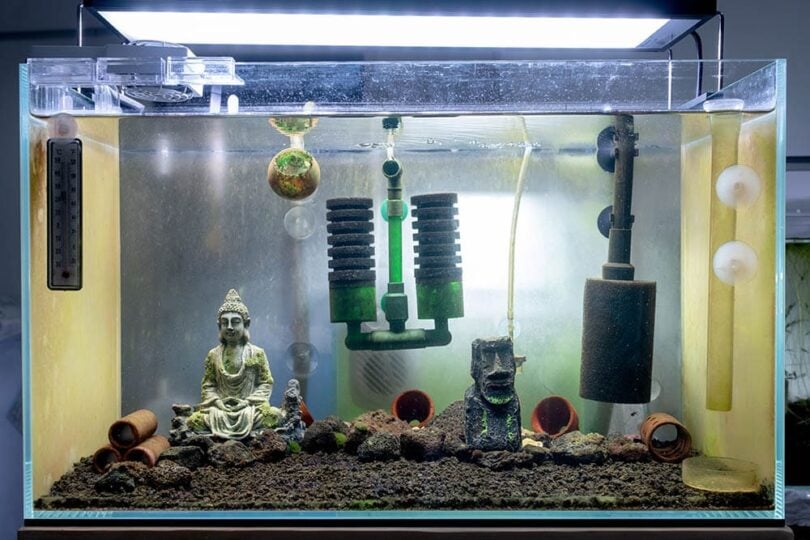
You probably know what most of the filter types are for aquariums. However, one type of filter that often gets overlooked is the sponge filter.
While sponge filters are not all that well-known and not hugely popular vs other filter types, they do have some good uses and benefits that make this low-cost filtration option attractive.
What Is An Aquarium Sponge Filter?
As the name implies, an aquarium sponge filter is a filtration tool used to clean the water, one which uses a sponge in order to filter out debris and other things too. A sponge filter uses some kind of air pump or water pump to draw water through a sponge which acts as the filter.
These sponge filters can be located on the inside of the aquarium walls and or be placed under the substrate, as well. They are really not all that different from other types of filters in terms of their function.

Simply put, sponge filters use some kind of method to draw water through the filtration mechanism, which in this case is a sponge, to filter out debris and other unwanted substances, eventually returning the clean and clear water into the tank.
Sponge filters in some cases can be connected with other filtration units for some really clean and clear water. The cool part about sponge filters is that sponges can come in different shapes, sizes, and with different sized pores, thus making them very versatile and adaptable to varying filtration needs.
What Does An Aquarium Sponge Filter Do?
Ok, so we know that sponge filters are a type of filter, but what exactly does it filter out? Well, first of all, the sponge acts as a mechanical filter. This means that it filters out solid debris like uneaten food, fish waste, and other small particles out of the water.
The smaller the pores on the sponge, the smaller the particles that it can capture, but it does mean a slower going due to less water flow. In other words, the main purpose of a sponge filter is mechanical filtration.
However, that is not all because sponge filters also act as a biological filtration unit. Biological filtration is essential for the health of any fish tank, whether saltwater or freshwater. You see, fish waste releases a lot of ammonia, which is deadly to fish and plants even in small quantities.
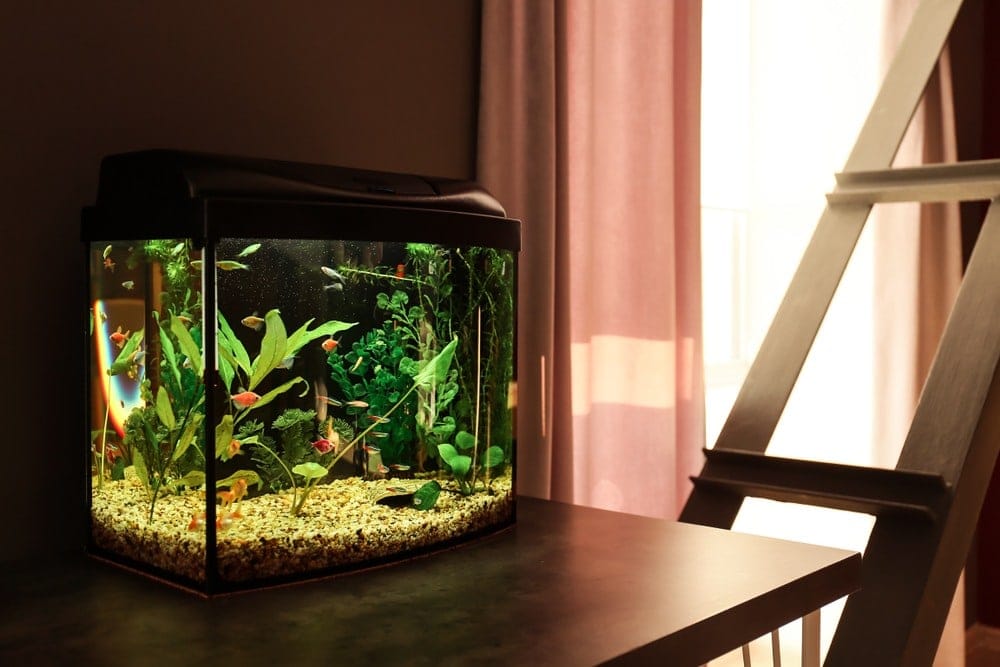
Biological filters, by having beneficial ammonia-eating bacteria, help to degrade and break down the ammonia into nitrite, which is still harmful to fish.
Yet, other beneficial bacteria then break down the nitrite into nitrate, which is less harmful to fish. That being said, an aquarium sponge filter does not engage in chemical filtration. So, simply put, a sponge filter is a mechanical and biological filtration tool used in various aquarium setups.
Aquarium Sponge Filter Setup
We have already talked about how to use a sponge filter, but here is a quick guide on how to set up a sponge filter. Don’t worry; it’s very straightforward.
- Step One: First, make sure that you have all of the required components. This includes the airline lift tube, an air pump, a check valve, and the sponge filter itself. Some people also choose to use an air stone.
- Step Two: To begin the setup process, attach the airline to the nipple on the top part of the lift tube.
- Step Three: If you are using an air stone, attach the airline to the second nipple at the bottom of the top plate of the lift tube, and then plug in the air stone to the airline.
- Step Four: Now it is time to install the check valve. Install the check valve with the air pump on the side where the air goes through. The best place to put the check valve is up by the rim of the tank.
- Step Five: Now you can plug the filter into the air pump, making sure that the air pump pumps the air through the sponge filter, along with the water. Ensure that the air pump stays above the water level of your aquarium; this ensures that in the unfortunate event of a power failure, water will not flow from the tubing into the air pump.
Aquarium Sponge Filters – Use & Maintenance
Generally speaking, you need to mount the sponge on an aquarium wall or under the gravel. You need to connect the intake and outtake tubes for the water, the mechanism that pulls the water through the sponge. And you need to hook up the power, too.
However, your best bet is to simply read the instructions on the packaging of the specific sponge filter you got for the ideal setup.
Maintenance
Now, when it comes to maintenance, luckily sponge filters don’t require too much of it, plus it is fairly easy to do as well. You will want to clean the sponge regularly, anywhere from every week to every four weeks.
These sponges get visibly dirty, so it is not hard to tell when cleaning is needed. Also, keep in mind that the amount of fish, plants, food, and other factors present in the tank will affect how often the sponge filter needs to be maintained.
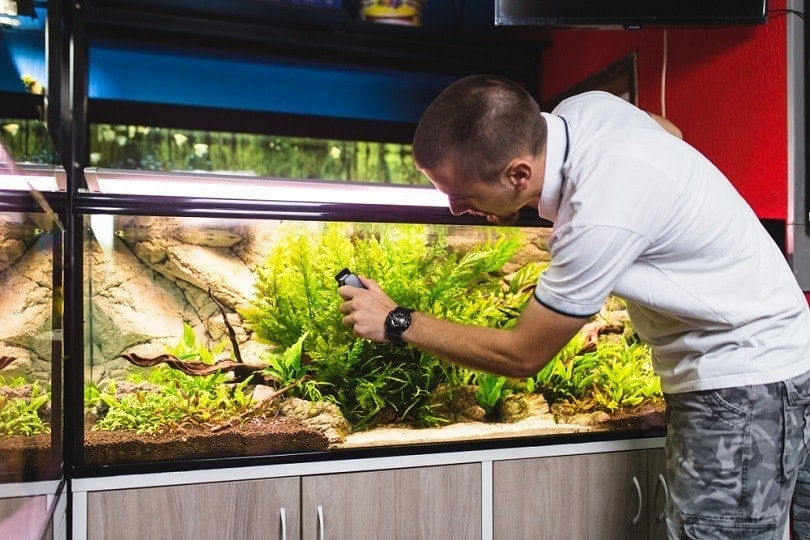
Cleaning
The easiest way to clean sponge filters is to remove some of the aquarium water and place it in a bucket. Take the sponge and squeeze it in and out for a few minutes until you are satisfied that all of the debris and particles have been removed and flushed out.
Water / Bacteria
The reason you want to use existing aquarium water to do this is because of the bacteria. If you use water other than that in your aquarium, you will be killing off and removing the beneficial bacteria needed for biological filtration, and you will have to wait for them to grow back and multiply.
However, if you do need to use clean water, such as could be the case if you are doing a water change due to really dirty water, you need to let the sponge soak in the aquarium water after rinsing it out in order to get some bacteria back into it. When cleaning the sponge filter this way, it’s best to only clean one or a part of the sponge, not the entirety of the filter. The chlorine in most tap water can destroy the colonies of beneficial bacteria that exist in the filter media.
Other than that, you might need to flush out the intake and outtake tubes every now and again, but there is not much else to be done in terms of maintenance.
The Pros Of Sponge Filters
There are several different situations where you might find that a sponge filter is the best way to go. So, what are these situations where your best option might just be this odd little filtration tool?
- If you have fish or animals that do not do well in a strong current, a sponge filter will do well. Animals like betta fish, other slow-swimming fish, and even shrimp do not like strong currents. Sponge filters create minimal currents and are therefore ideal for these kinds of fish, plus this also makes them ideal for breeding tanks where many small fry will be present.
- Sponge filters are also ideal for tanks with many really small creatures (including baby fish, also known as fish fry) that may be sucked up by other filters. Since these have a slow flow rate, they are not likely to suck up any creatures in your aquarium.
- The low flow rate and currents created by sponge filters also make them ideal for hospital and quarantine tanks. Weaker fish can’t handle strong currents, but they still need their water to be filtered, thus making sponge filters an ideal choice.
- Sponge filters are also ideal for colonizing fresh tanks with beneficial ammonia-neutralizing You can use a sponge in an aquarium, let it build up with bacteria, and then transfer that same water-soaked sponge into a freshly established tank. This will go a long way in cycling the tank and will immediately introduce beneficial bacteria into your new setup.
- You can also use a sponge in canister filters. They act as a good mechanical and biological filtration tool, so adding a small sponge or two into the media trays of your canister filter is not a bad idea either.
The Cons Of Sponge Filters
There are a couple of drawbacks to aquarium sponge filters that you might need to know about. First off, they do only engage in 2 of 3 types of filtration which most people would consider necessary for a fish tank to thrive.
No Chemical Filtration
While they do a great job in terms of mechanical and biological filtration, they absolutely do not engage in any chemical filtration at all. This means that certain odors, colors, and other substances may not be fully removed from the water.
That being said, most people would also agree that a really strong and efficient mechanical/biological filter can make up for a lack of chemical filtration.
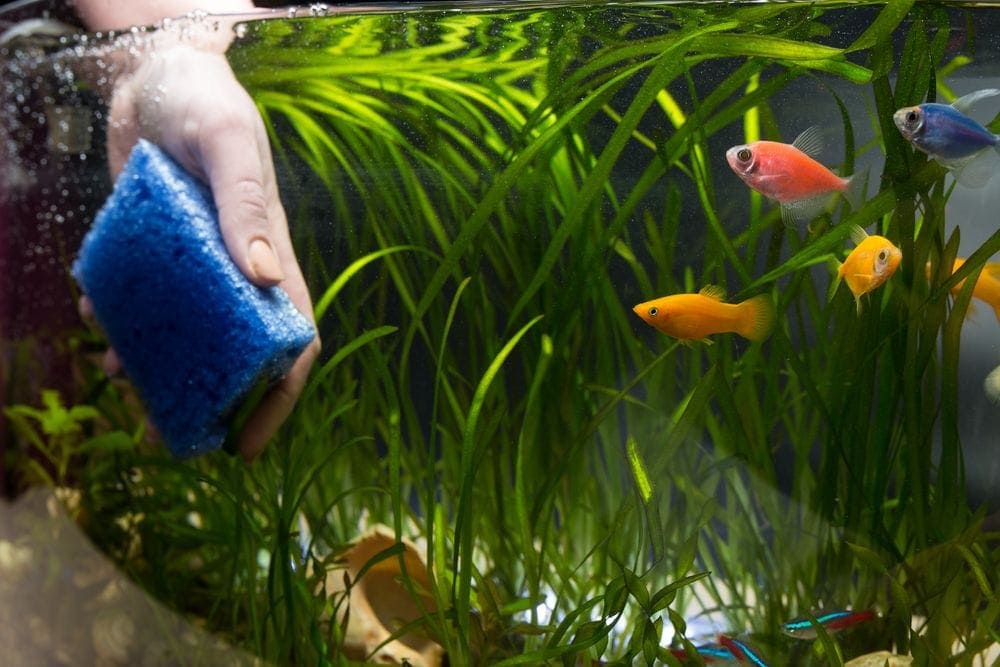
Visual Appeal
The other negative aspect of these sponge filters is that they just don’t look very nice. After all, it is a sponge and unless you have a lot of plants to hide it in the background, it is fairly visible. This is a minor drawback, but it is one that people tend to mention when they talk about sponge filter cons.
Do I Also Need An Air Stone For My Sponge Filter?
You may use an air stone if you choose, but it is not 100% necessary.
Contrary to popular belief, the bubbles you see with an air stone aren’t what aerate your fish tank. These bubbles are merely there for visualization, and they aerate the water by rising to the water’s surface and agitating it. This increases the surface area of the water in contact with atmospheric air, allowing carbon dioxide to escape the water, and oxygen to enter.
Conclusion
As you can see, while sponge filters do lack chemical filtration abilities, they are still a great choice to go with for a variety of situations.
We hope that this article has helped you figure out exactly what a sponge filter is, what it does, and how you can use it to keep the water in your aquarium as clean and clear as can be.
See also:
- Why is My Fish Tank Cloudy? (Simple Reasons & Easy Solutions)
- Fluval FX6 Review: King of Canister Filters?
Featured Image Credit: SritanaN, Shutterstock





